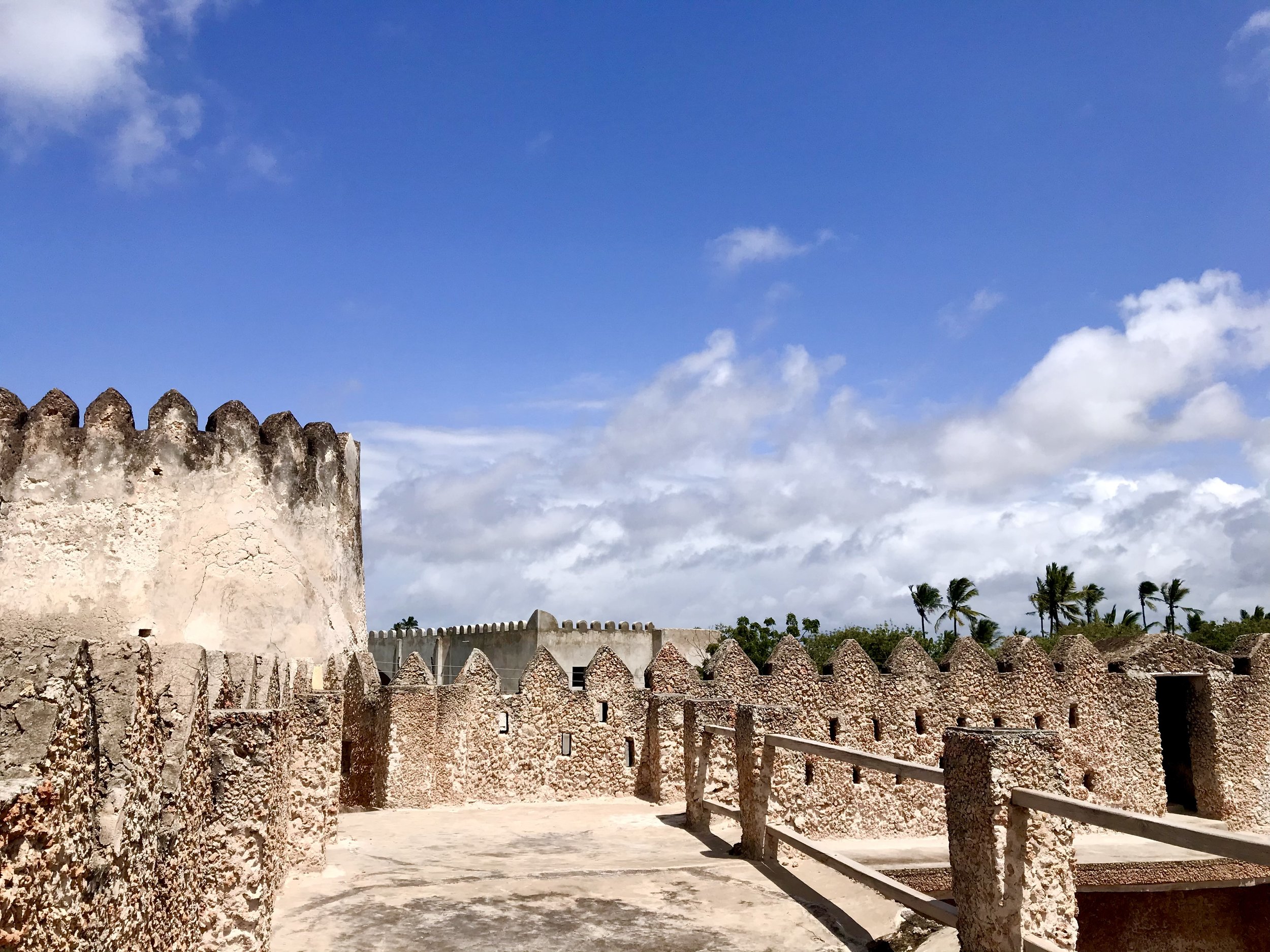Lamu is Kenya’s oldest living town, and one of the original Swahili settlements along coastal East Africa - it is believed to have been established circa 1370AC. Today, the majority of Lamu's population is Muslim.
Lamu like the other East African coastal cities was already established by traders from Oman in the tenth and eleventh centuries. In the 14th century Lamu was an important trade center colonized by the arabs. Portuguese traders came and went. At the beginning of the 1800 Omanis settled in Zanzibar and reasserted Omani authority in the area under the Sultan. The Lamu Fort (here on the right) was built around 1810 and the governor (Liwali) had his residence built right behind it at about the same time (Subira House today!).
Lamu is the cradle of Swahili poetry. Intermarriage and the introduction of Islam produced the Swahili culture, after the Arabic word sahil, for coast. There is a treasure of oral poetry originating from the neighbouring islands - poetry is still remembered and much read and appears in everyday life. Older settlements have been traced on the Island of Manda, at Taqua Ruins -easy to visit by motorboat at high tide and in the villages of Pate Island, North of Lamu.
In 1895, the British took control over the Kenyan coast. Slavery was banished from the island and the East African Railway was built from Mombasa to Lake Victoria.
Mombasa became the principal port for all of East Africa. An economic decline followed, and people moved to Mombasa in search for better fortune. Trade declined rapidly in Lamu. Today we can no longer greet the old sailing ships anchoring up outside town sailing south with the North east monsoon winds, bringing spices and silk and returning north towards the Middle East in March, after loading huge piles of Lamu mangrove poles. However, even in the midst of economic decline the old Swahili structure has been well preserved, and the early 1970's tourism has helped revitalize Lamu's economy.
Here on the left, a beautifully carved door in Pate island.
Pate Island is biggest island of the Lamu Archipelago and it is almost completely surrounded by mangroves. Its main towns are Faza, Pate Town and Siyu.
Like much of the Swahili Coast, Pate's history was marked by a steady transition from agricultural communities in the early first millennium into a specialized, urban trading society around the 10th century. As Lamu, Pate was frequented by trading Arabs, Persians, Indians, and others. It was the centre of the Pate sultanate from the 13th–19th centuries. The Swahili port of Pate long fought with Lamu and Takwa on Manda Island for economic dominance of the area. It was eventally conquered by Lamu in the late 19th century. View of the Siyu Fort, and below, more pictures of Pate.













